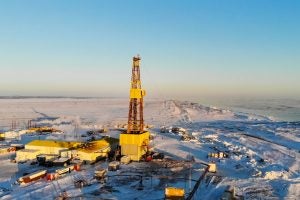New study underscores need for better methane measurement and strong regulations
New research reveals methane emissions from Saskatchewan’s oil and gas industry are much higher than previously thought. Fortunately, the Trudeau government has a tremendous opportunity to address this problem as it crafts next year’s federal budget and demonstrates its commitment to ratchet down climate pollution.
Methane is the primary ingredient of natural gas and a major contributor to global warming. Canada has made promises to reduce its methane pollution, but study after study after study shows methane emissions from oil and gas operations are much higher than what the industry reports. Without fixing this problem, it will be harder for Canada to meet its climate goals.
This latest research looked at oil production facilities in Saskatchewan and found that methane pollution from specific types of heavy oil sites was four times higher than what industry reports. Nearly a thousand facilities were emitting over ten tonnes of pollution an hour, meanwhile the government reports less than three tonnes from these same sites.
This astronomical difference between what Canada reports and what scientists measure adds up to more chaos for the climate. We can do better.
New study underscores need for better methane measurement and strong regulations Share on XBad math leads to ineffective policy
Traditionally, federal and provincial governments rely on industry reporting to estimate emissions. These estimates are used to inform policies and track progress against emission reduction targets. But if the numbers are wrong, we could make the dangerous mistake of thinking that we’re cutting more climate pollution than we really are.
Case-in-point: In December 2021, the Saskatchewan government released a report on oil and gas emissions claiming that major sources of methane pollution had been cut by 50%. Saskatchewan’s then Minister for Energy and Resources celebrated the accomplishment , saying the province had “surpassed current reduction targets” and that all energy producers should emulate the province’s regulations.
But the research tells another story and reinforces the fact that we need to get out in the field and measure this pollution directly. We can’t afford to base our climate policies on guess work.
The study’s authors reiterate the need for better monitoring and measurement saying, “The persistent misreporting of venting volumes and the resulting inaccuracies in bottom-up GHG inventories pose considerable risk to reduction targets and the creation of efficient regulations…Future regulations will need to enforce minimum standards for measurement if emissions are to be verifiably reduced.”
The Trudeau Government is aware of the need for improved monitoring and measurement and pledged to create a Centre of Excellence which would promote direct measurements of methane. The same commitment was reiterated in the Minister of Natural Resources’ mandate letter which lists top priorities for that department. These commitments are laudable, but only if the government puts its money where its mouth is and fully funds the Centre in its next budget. Knowing how much methane is being emitted and from where will help us prioritize the interventions needed to reduce emissions and meet our climate commitments.
Saskatchewan provides a cautionary example of how bad estimates can leave governments overconfident, leading to ineffective policies for pollution reduction.
Saskatchewan’s regulations rely, in part, on emission levels to determine which rules different oil operators need to follow. Those who produce more emissions must follow more stringent rules so, if emissions are underreported, regulations become less effective.
And when asked about creating policies to mitigate climate change, Saskatchewan’s Premier, Scott Moe, said “Saskatchewan industries are doing that. Saskatchewan has an industry that has reduced its methane emissions by 60 per cent relative to 2015.”
The new study suggests that Saskatchewan’s declaration of victory is likely to be premature, and without the right numbers, governments will never get their policies right.











